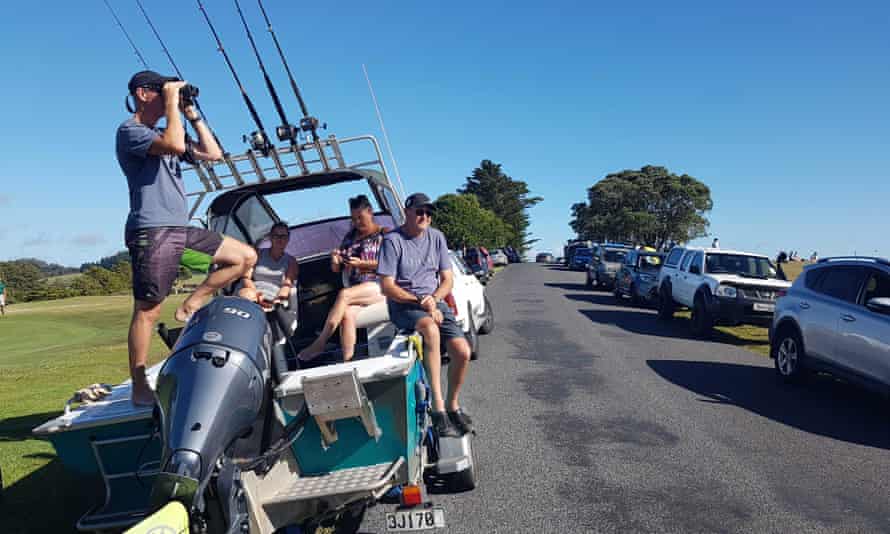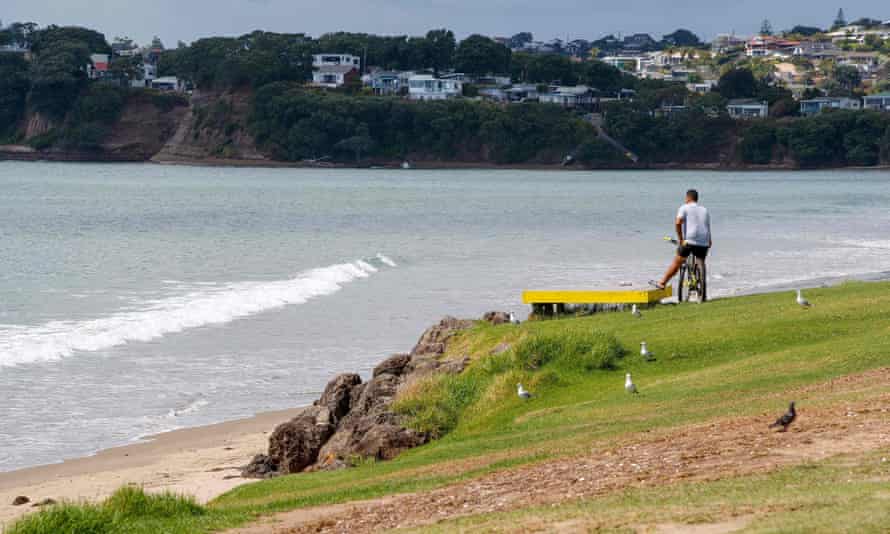Thousands of New Zealanders allowed to return home after tsunami alert | New Zealand
[ad_1]
Thousands of people have been told they can return home after being evacuated from coastal areas of New Zealand’s North Island in the wake of a powerful 8.1-magnitude earthquake and tsunami warning.
The New Zealand National Emergency Management Agency (Nema) issued a national warning on Friday morning, saying people in many coastal areas of the North Island “must move immediately to the nearest high ground, out of all tsunami evacuation zones, or as far inland as possible. Do not stay at home”.
The US Geological Survey said the larger quake, which followed two smaller ones, was located near the remote Kermadec Islands at a depth of 12 miles (19km).
The US tsunami warning system also said the quake could cause waves reaching between 1m (3ft) and 3m (10ft) in height in French Polynesia, and waves of up to 1m in Niue, New Caledonia and the Solomon Islands.

However, Nema announced at around 1pm local time that the government’s science agency had informed it that the largest waves had passed and people were allowed to return to their homes with the proviso that they avoid the ocean and beaches.
“GNS Science has advised that the largest waves have now passed, and therefore the threat level is now downgraded to a beach and marine threat for all areas which were previously under land and marine threat,” Nema said.
“All people who evacuated can now return. The advice remains, for all areas under beach and marine threat, to stay off beach and shore areas.”
The area under threat was further downgraded at around 3pm to the North Cape from Ahipara to the Bay of Islands, the east coast of the North Island from Cape Runaway to Tolaga Bay, and Great Barrier Island, and the Chatham Islands. There is no tsunami threat in all other areas.
The tsunami threat to New Zealand has been further downgraded.
— National Emergency Management Agency (@NZcivildefence) March 5, 2021
The original evacuation warning came after the third and largest quake of the day hit New Zealand. A magnitude 7.3 earthquake hit the country in the early hours of the morning, which was followed by a magnitude 7.4 quake in the Pacific.
The closest large town to the epicentre was Gisborne, with a population of about 35,500.
“Hope everyone is OK out there – especially on the east coast, who would have felt the full force of that earthquake,” the prime minister, Jacinda Ardern, posted on Instagram.
Speaking to media later, she said she “absolutely” felt the first earthquake. Her first thought was “Bugger it”, she said.
There were no immediate reports of serious damage or casualties, but Nema had earlier told people near the west coast of the North Island from Cape Reinga to Ahipara and on the east coast from Cape Reinga to Whangarei and from Matata to Tolaga Bay to move as far inland as possible.
Radio New Zealand reported that Tolaga Bay, north-east of Gisborne, was a “ghost town” as residents headed for higher ground. It was a long day for residents, who had been asked to evacuate earlier then had that warning cancelled, before another warning followed at 8.45am.
At a midday briefing, the civil defence minister, Kiri Allen, said it had been “an extraordinary morning for many New Zealanders up and down the country” and praised the speed with which people had responded to the calls to evacuate.
A “relatively extensive” area of the country could be subjected to unusual activity, civil defence controller Roger Ball said. “We are advising to play it safe… people do need to stay off the beach and off the water.” That included not going out in boats, he said.
The threat of tsunamis was ongoing he said, adding “the first wave may not be the largest”. There was also the risk of strong and unusual currents.
Traffic jams were reported as residents hurried to evacuate, though people were remaining calm. Ruakākā resident Rhys Owen told Stuff he received an emergency alert on his phone and later heard sirens sounding.
“We are feeling OK, no sign of panic yet. As long as we can get to higher ground, we’ll be fine.” He said there were a few trees along the road, so “if we have to get out and clamber up we will”.

In Whangārei, north of Auckland, witnesses said the tide was going out when it was supposed to becoming in. “We are now seeing sandbanks [exposed when they shouldn’t be] and some brown dirty water coming in,” MP Shane Reti told Stuff.
And on Twitter, residents posted video of a tsunami wave rolling into Tokomaru Bay north of Gisborne.
More than 60,000 people left reports on GeoNet’s website, saying they had felt the quake; 282 people described the shaking as “severe” and 75 said it was “extreme”. Most others described it as light. Aftershocks were still being recorded in the area.
The US Geological Survey initially recorded the quake at 7.3, then revised it down to 6.9. It said the quake occurred at a depth of about six miles (10km).
In 2011 a 6.3-magnitude quake hit the city of Christchurch, killing 185 people and destroying much of the city centre.